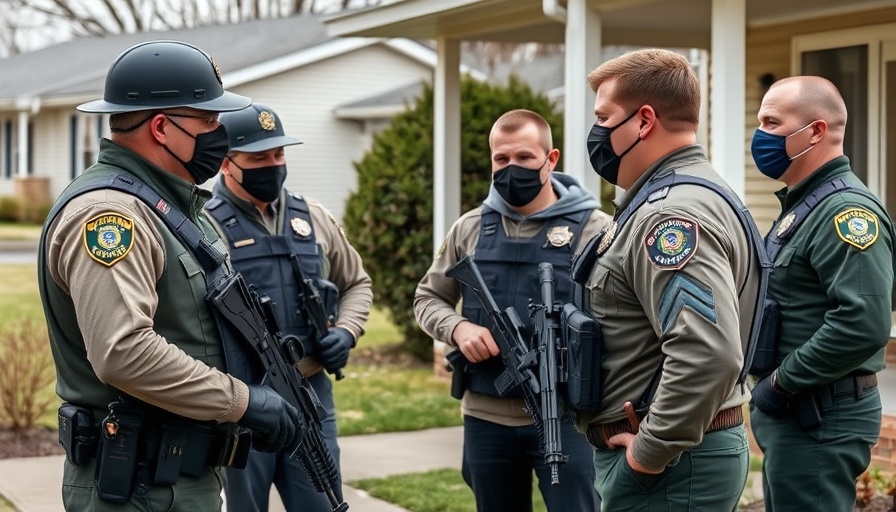
The Shocking Incident: Confusions and Consequences
In a recent incident that has sparked considerable attention within law enforcement circles, a Connecticut police officer has been arrested after mistakenly discharging his firearm at a suspect, believing he was using a Taser. This alarming event serves as a stark reminder of the potential repercussions of equipment misidentification, which can directly endanger lives and heighten community tensions.
Misunderstanding of Equipment
The incident raises questions about the clarity and accessibility of training for law enforcement officials regarding the tools at their disposal. While it's not unusual for officers to face high-stress scenarios where split-second decisions are crucial, one cannot help but wonder if comprehensive training could mitigate such critical mistakes. Given the increasing scrutiny around police use of force, incidents like these only fuel debates surrounding police training programs and policies on equipment usage.
Long-term Impacts on Police-Community Relations
Each time an incident like this occurs, community trust can erode. Residents often view such mistakes through the lens of police brutality, raising concerns about accountability and transparency. Transparency is essential in law enforcement, particularly when tensions regarding police misconduct are already running high. The introduction of body cameras and other technologies aims to record and provide evidence during interactions, but are they enough to rebuild trust after incidents driven by confusion?
The Role of Technological Innovations
In an age where police departments are increasingly adopting new technologies, the utility of body cameras and AI analytics cannot be overstated. These tools not only serve to record events as they happen but can enhance officer safety by providing real-time data analysis, leading to better decision-making in the field. However, equipping officers with advanced technology is only part of the solution. Continuous education on the distinction between a firearm and a Taser, as well as mindful utilization of policing technologies, should be prioritized.
Path Forward: Enhancing Police Training and Policies
This incident should invoke a re-evaluation of police training policies across departments. Increased focus on realistic scenario training, stress management, and regular assessments on the use of equipment might just be the fix. Engaging officers in discussions about their experiences and incorporating their feedback into the training program could foster a culture of accountability and improvement. This approach not only emphasizes officer safety but also reinforces the significance of police-community relations.
Taking Action: The Call for Reform
To prevent similar incidents in the future, police departments must adopt a proactive stance on reform. Engaging in community dialogues about use of force policies and showcasing transparency through department updates can play a critical role in restoring trust with the public. Moreover, police unions have a pivotal part to play in advocating for necessary reforms within their departments. As we move forward, it is crucial to evaluate how such occurrences impact public perception of safety and police accountability.
In conclusion, while the situation in Connecticut is a grave misstep, it also represents an urgent call to revisit fundamental practices in police training. Only through committed efforts toward reform and education can safety and trust be restored. Police departments should explore comprehensive training strategies to ensure officer safety while building stronger ties with their communities.
For police departments, policymakers, and academic researchers, understanding and adapting to these challenges is essential. The pursuit of transparency and ongoing improvement in officer training can set the path for a future where both officer and community safety thrive.
 Add Row
Add Row  Add
Add 

 Add Element
Add Element 


Write A Comment